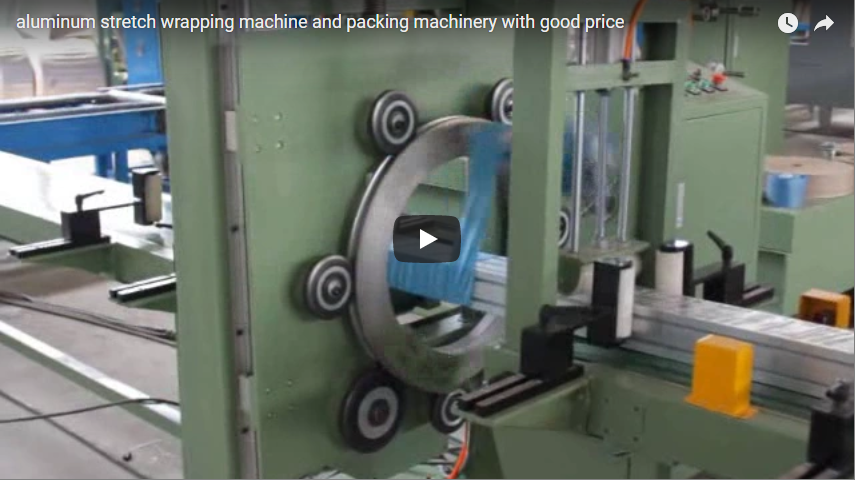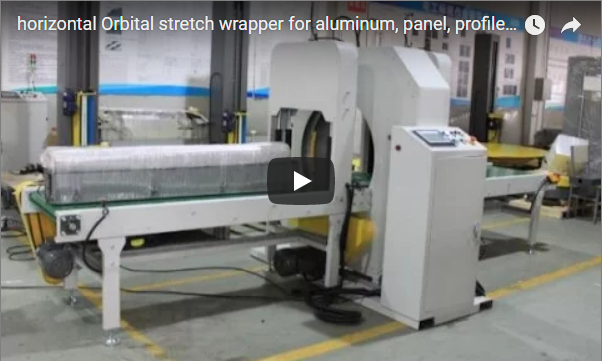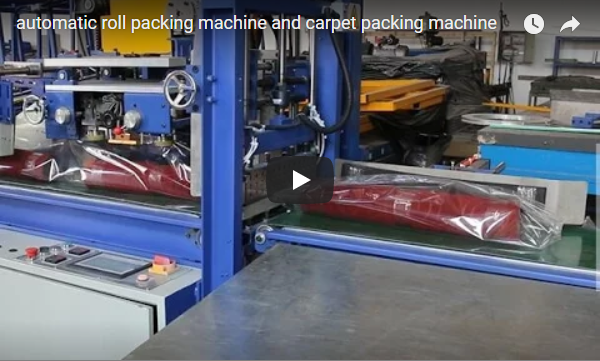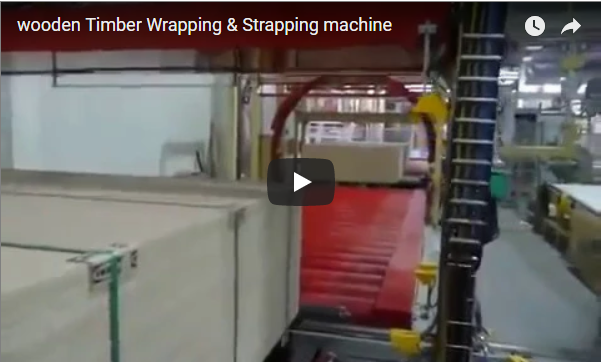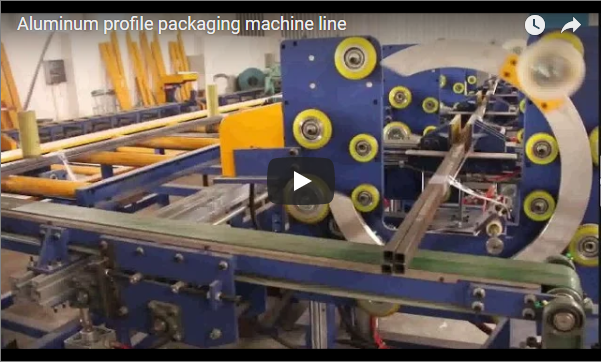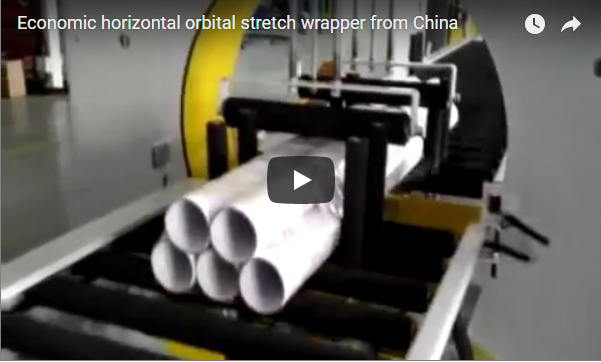# Mastering Bundle Wrapping: A Fabricator's Deep Dive into Orbital Stretch Wrappers
In modern fabrication and manufacturing, efficiently handling and securing long, bulky, or irregularly shaped products for transit or storage presents a constant challenge. Manual wrapping is time-consuming, inconsistent, and often inadequate for ensuring load integrity. Enter the orbital stretch wrapper – a specialized packaging machine designed to tackle these very issues head-on. This article dives deep into the technology, applications, and real-world benefits of orbital wrappers, providing fabricators with valuable insights into optimizing their end-of-line packaging operations.
### 1. Understanding the Orbital Wrapping Concept
Unlike traditional turntable or rotary arm wrappers primarily designed for palletized loads, an orbital wrapper, often called a horizontal wrapper, passes the product *horizontally* through a rotating ring that dispenses stretch film. This unique approach makes it ideal for bundling and securing items that are lengthy or awkward to handle on a standard pallet wrapper.
### 2. How It Works: The Mechanics Behind the Wrap
The core of an orbital wrapper is its vertical rotating ring. Here’s a breakdown of the process:
* **Product Infeed:** The bundle (e.g., pipes, extrusions, lumber, bundled kits) is conveyed horizontally towards the wrapping ring.
* **Ring Rotation:** As the product enters the ring's aperture, the ring begins to rotate around the product's cross-section.
* **Film Dispensing:** Mounted on the ring is a film carriage assembly holding a roll of stretch film. As the ring spins, film is dispensed and applied around the bundle.
* **Pre-Stretch:** Most modern orbital wrappers incorporate a powered pre-stretch mechanism. This stretches the film *before* it's applied to the load (often by 150% to 300%). This crucial feature optimizes film usage (reducing costs) and increases wrap tension for better load containment.
* **Tension Control:** Sophisticated tension control systems ensure the film is applied tightly and consistently, regardless of product shape variations.
* **Product Through-Feed:** While the ring rotates, the product continues to move horizontally through the machine via powered conveyors (often roller or belt conveyors), resulting in a spiral wrap pattern along the length of the bundle.
* **Clamp, Cut, and Seal:** Once the product has passed through, automated systems clamp the leading edge of the film for the next cycle, cut the film tail, and often use a heat sealer or wiping mechanism to secure the tail to the bundle, preventing unraveling.
### 3. Key Technical Parameters Fabricators Should Consider
When evaluating orbital wrappers, several technical specifications are critical:
* **Ring Diameter:** Determines the maximum cross-sectional size (width x height) of the bundle that can be wrapped. Available in various sizes to suit different product dimensions.
* **Ring Rotational Speed:** Measured in RPM (Revolutions Per Minute), this directly impacts throughput capacity. Higher speeds mean faster wrapping cycles.
* **Conveyor Speed:** Must be synchronized with ring speed to achieve the desired wrap overlap and coverage. Variable speed control is essential for flexibility.
* **Film Specifications:** The machine must be compatible with the desired film type (gauge, width, pre-stretch percentage).
* **Control System:** Typically PLC-based (Programmable Logic Controller) with a user-friendly HMI (Human-Machine Interface) for setting wrap parameters (number of wraps, tension, overlap, speed), storing recipes, and diagnostics.
* **Safety Features:** Light curtains, safety interlocks, emergency stops are crucial for operator protection, adhering to industry safety standards.
### 4. Prime Applications in the Fabrication Industry
Orbital wrappers excel where other wrapping methods fall short. Common applications include:
* **Metal Extrusions:** Aluminum or steel profiles, tubes, and pipes.
* **Lumber and Timber:** Bundled wood planks, mouldings, and engineered wood products.
* **Doors and Windows:** Protecting finished surfaces and keeping components together.
* **Plastic Pipes and Profiles:** Securely bundling PVC, HDPE, or other plastic materials.
* **Bundled Components:** Kits of parts, assembled frames, or long, narrow assemblies.
* **Textiles and Rolled Goods:** Though less common in fabrication, applicable for certain rolled materials.
### 5. Tangible Benefits for Your Operation
Integrating an orbital wrapper delivers significant advantages beyond just wrapping a product:
* **Enhanced Product Protection:** The tight, consistent wrap shields products from scratches, dust, moisture, and shifting during handling and shipping.
* **Improved Load Stability & Security:** Prevents individual pieces within a bundle from separating or moving, crucial for safe transport and storage.
* **Significant Throughput Increase:** Automates a previously manual or semi-manual process, dramatically increasing packaging speed and overall line efficiency.
* **Reduced Labor Costs:** Frees up personnel previously dedicated to manual wrapping for more value-added tasks.
* **Optimized Film Consumption:** Powered pre-stretch mechanisms can cut film usage by 50% or more compared to manual wrapping or machines without pre-stretch, leading to substantial material cost savings.
* **Professional Package Appearance:** Delivers a consistent, neat, and professional look to finished bundles, enhancing brand perception.
* **Improved Operator Safety:** Reduces risks associated with manual handling and wrapping of heavy or awkward loads.
### 6. From the Shop Floor: Practical Considerations
Having worked with packaging automation, I can attest that the real value emerges in daily operation. Ease of use is paramount – operators need intuitive controls to quickly select recipes or adjust parameters for different product runs. Film loading should be straightforward and safe. Routine maintenance, like cleaning rollers and checking tensioner components, is vital for consistent performance and longevity. Selecting the right stretch film formulation (considering puncture resistance, cling, and gauge) specifically for your products and the wrapper's capabilities is also key to achieving optimal results. Furthermore, consider how the wrapper integrates with existing infeed and outfeed conveyors for a seamless workflow.
### 7. Choosing the Right Orbital Wrapper System
Selecting the ideal orbital wrapper involves assessing:
* **Product Dimensions & Weight:** Minimum and maximum length, width, height, and weight of the bundles.
* **Required Throughput:** How many bundles per hour or shift need to be wrapped?
* **Level of Automation:** Standalone machine vs. fully integrated into an automated production line.
* **Budget:** Initial investment versus long-term savings in labor and materials.
* **Supplier Support:** Availability of service, spare parts, and technical expertise.
Consulting with experienced packaging machinery suppliers who understand fabrication industry needs is highly recommended. [Consider linking to an authoritative packaging industry association or resource here].
### 8. Conclusion: Wrapping Up Efficiency and Protection
For fabricators dealing with long, bundled, or awkwardly shaped products, the orbital stretch wrapper is more than just a packaging machine; it's a strategic investment in efficiency, product integrity, and operational excellence. By automating the wrapping process with precision and control, these machines reduce costs, enhance safety, improve throughput, and ensure products reach their destination securely and professionally presented. As demands for speed and quality continue to rise, the orbital wrapper proves itself an indispensable tool in the modern fabrication environment.
---
For more information on specific horizontal wrapping machine solutions:
https://www.fhopepack.com/Horizontal_wrapping_machine.html
Contact us for inquiries:
info@fhopepack.com

